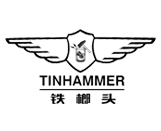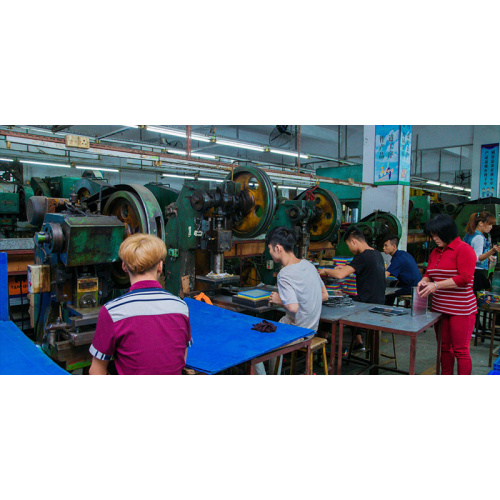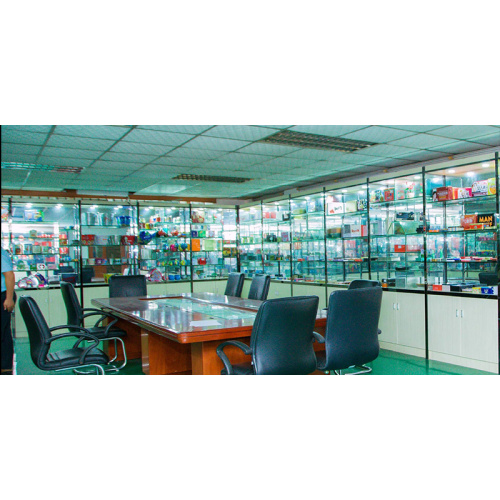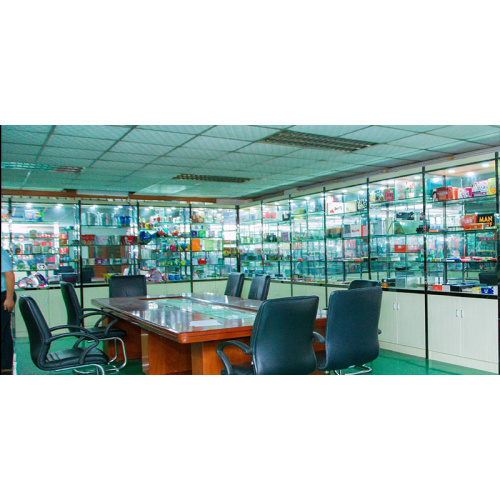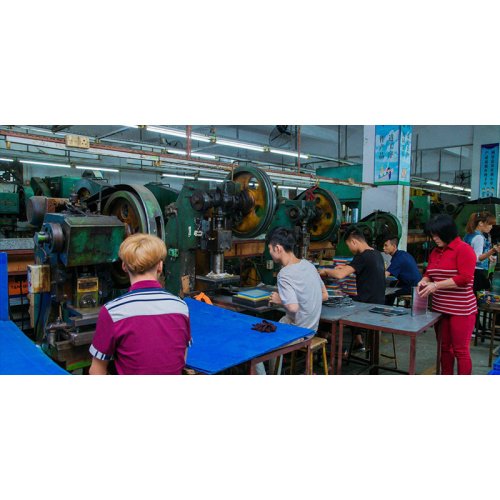Since the galvanized container weld area is oxidized due to welding, the oxide layer must be removed first to refill the zinc layer. The method of removing the oxide layer in the special zinc welder for the galvanized container is sandblasting.
When the can body comes down from the welder, it is lifted by the hoisting machine to the sandblasting box mouth (because the lower part is sanding, so the sandblasting box is made higher), and the position of the supporting wheel in the blasting box is aligned with the tank opening. The can body is directly positioned on the supporting wheel when it enters the box. The operator will weld the sand blasting gun mouth and press the control button after positioning. The two sand blasting nozzles opposite to the spray hole start sand blasting both inside and outside the container. At this time, the supporting roller drives the can body to move parallel under the action of the air pump or the motor, so that the entire weld can of the can body is completely completed from the beginning to the end along the blasting gun mouth. Thus, the oxide layer on the outer and inner welds of the galvanized container is Completely removed.
The blasting power may be the pressure applied to the sand storage tank, or may be driven by the negative pressure generated by the compressed air flow. The sand particles are easily affected by the pressure difference during the spraying process, and the welds sprayed with the damp sand material are likely to cause rust spots in the rising temperature caused by the sand particles. Therefore, the galvanizing vessel welding zinc supplementing machine needs the drying equipment support. To ensure that the sand used for sandblasting is dry.
After dust removal, it enters the zinc sprayer and the action is basically the same as that of sandblasting. The operator aligns the weld to the zinc spray gun and positions it, then pushes the control button. The two spray nozzles are opposite to the zinc spray gun at the same time to the galvanized container. Zinc is sprayed inside and outside the weld. The zinc spray gun relies on the high temperature generated by the combustion of acetylene to melt the zinc wire, and the liquid zinc is sprayed on the can body through the generated air pressure. The zinc wire automatically follows the melting speed. At the same time, the roller wheel drives the parallel movement of the can body. The entire weld of the can body is completed from the beginning to the end of the zinc spray gun, so that the entire damaged zinc layer inside and outside the galvanized container is completely filled.
Because the temperature of Zn-addition zinc is high, zinc-iron alloy layer is easy to form, and a dense oxide film is easily formed on the surface. Therefore, the galvanization layer formed by Zn-addition of Zinc-addition welding machine for galvanized containers is closest to plating. The structure of the zinc (white iron) plate.
Second, tin (anchor) tank coating process
Tinplates and chrome plates are generally used for the production of small containers. The iron is printed prior to production. For food containers, it is generally necessary to print both inside and outside. When printing, in order not to affect the welding quality of the weld due to the reason of the coating, it is generally left blank at the overlapping part of the can body, that is, no paint is printed. After seam welding, the weld seam is neither coated nor coated. The internal weld seam is in direct contact with the contents and is subject to rust. In particular, high temperature processing and long-term preservation of foods containing acids and sulfur, internal protective layers There will be more stringent requirements, so we must make up the weld.
The applicator is a device that coats the weld with a protective layer that is not detrimental to the contents and resists corrosion. The coating machine is generally composed of a can body conveying system and a supplementary coating system. The can body conveying system generally has two magnetic conveyor belts, which can continuously, stably and accurately send the can body after welding into and out of the supplementary coating area. Applicable equipment roughly classified as shown in Figure l.
Roller coating
Internal coating machine Liquid coating Non-air coating
Spray type powder coating
Coating equipment electrostatic coating
External coating machine
Brush type
Fig. 1 Classification of supplementary coating equipment
1. Inner coating machine
The inner coating machine is a device for applying the coating on the inner surface of the can's weld. The following are commonly used:
(1) Roller coating: The make-up motor is decelerated by the worm box, and the supplementary coating wheel with proper amount of paint is driven to rotate. When the can body passes through the device, the paint is coated on the inside weld, and the speed of the make-up wheel can be adjusted. The speed of the make-up wheel is consistent with the speed of the can body, the coating thickness can be fine-tuned, and the coating liquid level is automatically controlled. The roller coating form has the characteristics of low cost and thick coating film, but has high requirements on the quality of the weld seam and the shape of the can body, and requires a long drying time, and is easy to foam when dried.
(2) Air spray: It sprays the paint onto the can in the atomized compressed air. The spraying process is continuous. The characteristics are: thin coating film, but good protection effect; due to air mixing during the spraying process, it can drive off a large amount of solvent, and has special requirements on the quality of the weld seam and the shape of the can body, and the solid content is low; due to the continuous spraying, the coating Large consumption, heavier environmental pollution.
(3) Airless spraying: The paint does not mix air, uses high pressure to pass the small pipe, passes the heater to maintain the stable viscosity, and sends it to the spraying area. In the spraying process, when there is a can body passing the nozzle, the sensor sends a signal to spray the paint, and it stops automatically when there is no can. Compared with gas spraying, the coating thickness is thick and the protection effect is better.
(4) Powder coating: There are two kinds of vacuum and low pressure delivery and air jet delivery. The feeding system will send polymer powder material with anti-corrosion performance continuously to the spraying area from the pipeline on the lower arm of the welding machine, and is charged by high-voltage static electricity in the vicinity of the nozzle. The nozzle sprays the charged powder and adsorbs it. On the inner weld seam, a continuous coating strip is formed, which becomes a protective film after being heated and melted. Its biggest advantage is that it does not add any latent agent, the coating film has large curing thickness, strong corrosion resistance, short curing time, no special requirements on the quality of the weld, and the protection effect is very good, but the coating price is expensive.
2. External coating system
The external replenishing coating system is a device for replenishing the external surface of the can body's weld. Commonly, there are two forms of roller coating and brush coating.
(1) Roller coating: The motor rotates with the coating wheel coated with a suitable amount of paint after deceleration. When the can body passes, a transparent and appropriate coating is applied on the external weld seam. The can body conveying speed and the supplementary painting speed are adjustable respectively.
(2) Brushing: When the can body passes, apply a brush to the outer surface of the weld with a fixed brush. The device is simple in structure, but the brush is susceptible to hair removal and affects the appearance of the can body.
3. Bake in equipment
The paint applied on the can body must be heat-cured in order to evaporate the solvent and allow the monomers to be polymerized to obtain corrosion resistance. Especially for foods that have been sterilized at high temperatures, their curing requirements are even higher. The temperature of the surface of the can body at the time of curing must not be higher than the melting point of tin, and the coating may have blistering or scorching, and the curing time must be sufficient. The drying equipment consists of a can body conveying system and a heating system. The conveyor system generally uses chains, steel belts, belts, etc., and the body is sent into and out of the heating zone by means of the magnetic force. The conveying system is divided into linear conveying and circular conveying, and the circular conveying saves the area.
Common drying equipments are as follows:
(1) Infrared heating dryer: The coating is heated and solidified with infrared rays. This method is difficult to control the temperature, and it is prone to baking, scorching, bubbles, etc., high heating power and high power consumption.
(2) Electric air heating dryer: Air is blown through the resistance heating element with air to form hot air, then blown to the weld seam of the can body to prevent the surface coating from rapidly solidifying, and the internal solvent evaporates and bubbles are generated. The furnace temperature rises gradually with the conveyor line, the furnace temperature of each furnace can be controlled separately, and it is easy to achieve the requirement that the furnace temperature gradually increase from low to high.
(3) Gas-fired hot air heating dryer: Combine combustible gas such as natural gas and gas with air, and then distribute each burner through the pipeline network, and send air to adjust the temperature. The heating system can generally automatically ignite and monitor.
(4) Induction heating dryer: The Metal Can body is heated by induction current generated in the magnetic field at high frequency. The temperature of the can body depends on the distance between the can body and the coil. By adjusting this distance, an appropriate can body temperature can be obtained, and the induction coil changes with the shape of the can body. Its characteristics are: the heating of the coating from the inside to the outside, is conducive to the evaporation of the internal solvent, the impact on the ambient temperature is small, it should adapt to the shape of the can body should be poor.


